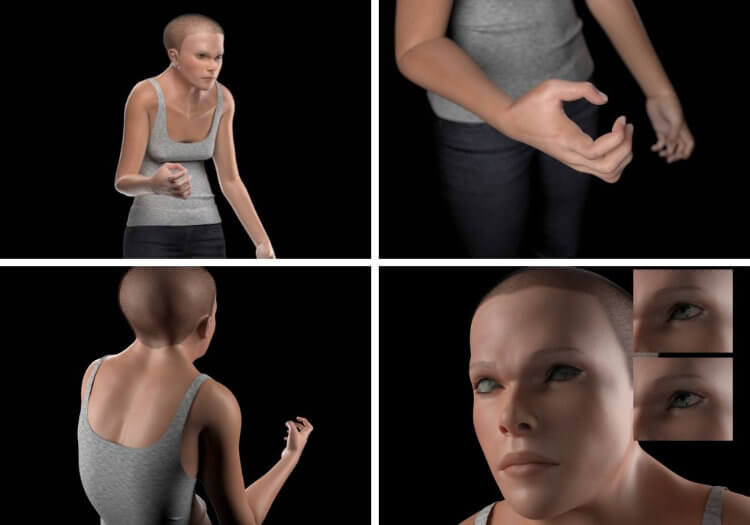A new computer model suggests that hunched backs, clawed hands, and second eyelids may become widespread characteristics of human anatomy in the future. The alarming, hopefully joking research warns that excessive use of technology may guide human development in a path that results in individuals looking abnormal as opposed to what people consider normal now.
There's no denying that electronics now play a daily part in many people's lives, yet what is that much screen time causing to the human body? Researchers collaborated with a 3D developer to generate representations of a "future human" that takes into account all of the issues that long-term technology use may produce.
According to the report from Neoscope, the team was inspired, in particular, by a study that revealed the average American spends seven hours each day on the Internet. With this in consideration, the team looked into a variety of scientific evidence and expert perspectives on the psychological and physical changes caused by constant exposure to cell phones, computers, and television, and the outcomes were stunning.
Hunched-back Future Humans
Researchers anticipate that office tasks and squinting their necks to glance at cell phones will lead to humans having bent backs in the future. Many people nowadays modify their posture to stare down at mobile phones or up at their workplace screens.
According to studies, this stresses the areas of the body that influence stance.
Spending hours gazing down at one's phone stretches one's neck and pushes one's spine out of alignment. As a result, the muscles in one's neck have to work harder to support the head. Sitting in front of a computer for hours on end at work means that the torso is dragged out in front of the hips rather than being packed straight and aligned, according to Caleb Backe, a health and fitness specialist at Maple Holistics, in a release from TollFreeForwarding.

ALSO READ : Terrifying Model Provides a Glimpse of How Humans Might Look in the Year 3000 From Overusing Technology
Texting Molding the Future of One's Arm
The formation of "text claw," a new phrase that explains how the hand begins to permanently acquire the shape of a claw as a result of continually holding a smartphone, is one of the most visible alterations. Because of the widespread use of cell phones for communication, future humans may have a 90-degree elbow. This disease would result in the elbow remaining continuously flexed at 90 degrees.
As per Dr. Nikola Djordjevic of Med Alert Help, the manner people hold their smartphones can create strain in particular regions of contact, resulting in 'text claw' as well as '90-degree elbow,' also referred to as cubital tunnel syndrome. Compression or stretching of the ulnar nerve, which runs in a cleft on the inner side, causes this condition.
Mindy's model suggests that people may evolve a unique protection about too much light source from digital gadgets - a second eyelid. Previous research has revealed that light-emitting exposure might disturb sleep patterns, resulting in sleeplessness and other health issues. Excessive screen usage can also cause headaches, eye strain, and even impaired eyesight, especially in youngsters.
Second Eyelid and Smaller Brains
As per Kasun Ratnayake of the University of Toledo, humans may grow a wider inner eyelid to protect themselves from excessive light or the eye's lens may have evolved to block entering blue light yet not other higher spectrum lights like green, yellow, or red, according to Beamstart.
Furthermore, "Mindy" shows that future humans would most probably suffer from a severe case of "tech neck," in which the muscles expand to reduce the harm caused by incorrect posture. Furthermore, Mindy's cranium is thicker to assist in safeguarding the human body against potentially harmful radiofrequency radiation emitted by cell phones.
Sedentism, according to studies, can diminish human brain capability. Mindy also had a lesser brain than modern people. Based on the researchers, all of this can make future humans more sensitive to mental health disorders like anxiety and sadness.
Humans must have so much gratitude to science. There is a cost for convenience, communication, enjoyment, and so much more. Mindy is the visual depiction of a growing amount of scientific information, explains Jason O'Brien, COO of TollFreeForwarding.com. Whereas the advantages that technology provides to individuals and organizations are too many to overlook, it is necessary to assess current usage to ensure that overall health is not being harmed in the long run.
Check out more news and information on Medicine and Health in Science Times.
© 2025 ScienceTimes.com All rights reserved. Do not reproduce without permission. The window to the world of Science Times.












